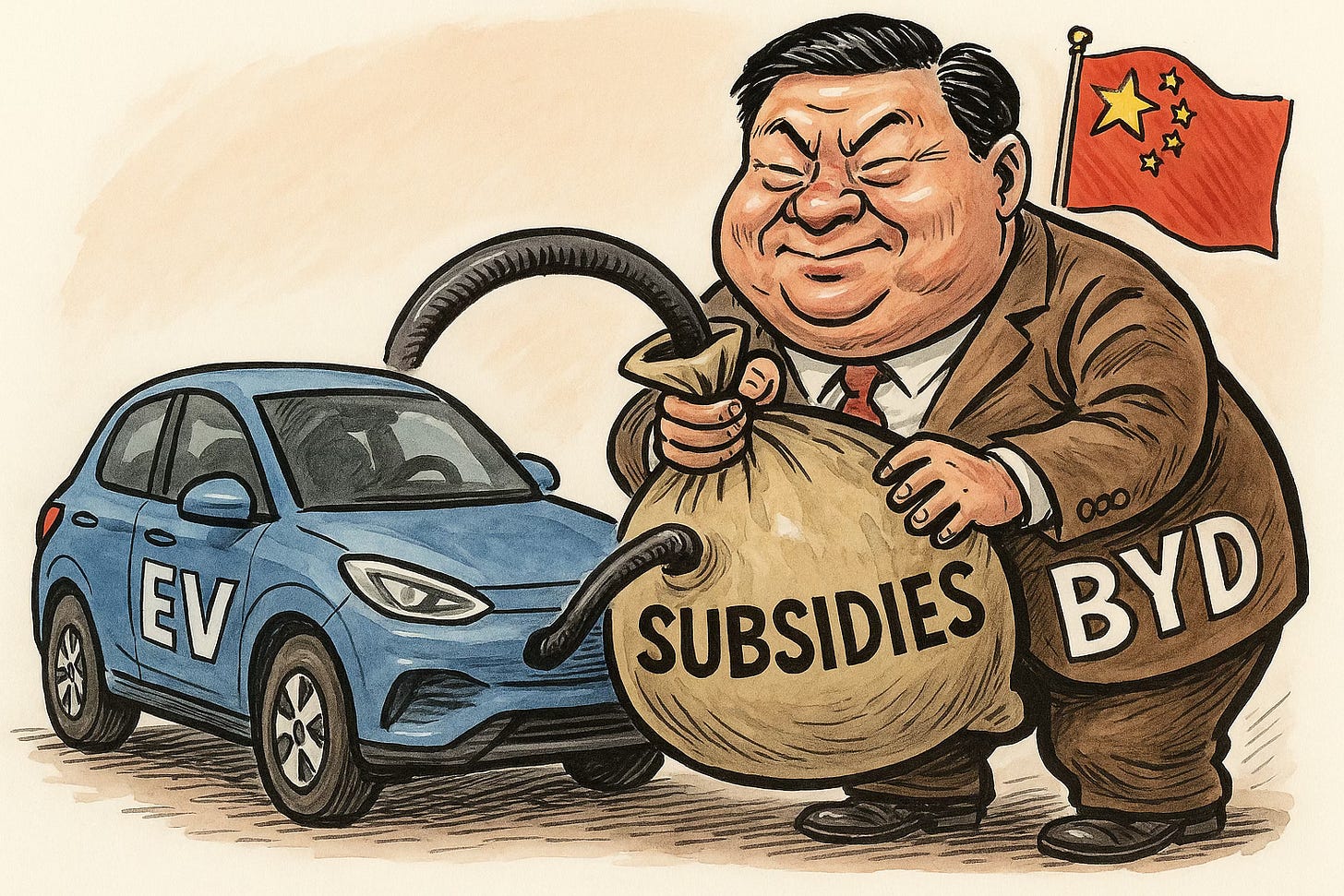BYD and the Subsidy Trap: How China's EV Giant Exploits Government Support (UDPATED)
By Rafael Benavente
BYD and the Subsidy Trap: How China's EV Giant Exploits Government Support (Update)
China’s electric vehicle (EV) revolution has a poster child: BYD. The automaker has surged to become one of the largest EV manufacturers in the world, outpacing rivals in both domestic sales and global shipments. But behind the rise of BYD lies a troubling pattern of government dependence, opaque financing, and what some analysts call subsidy abuse.
🔹 The Scale of the Support
Since the mid-2010s, BYD has received billions in direct and indirect subsidies from local and national Chinese authorities. These include:
Cash incentives for each EV sold
Land grants and low-interest loans for factory construction
Preferential procurement policies by municipal governments
Tax breaks for R&D and battery development
Carbon credit trading schemes
According to Caixin and other Chinese financial outlets, BYD received over 30 billion RMB ($4+ billion) in various forms of state support between 2015 and 2022.
🤞 Subsidies as a Competitive Weapon
While all Chinese EV makers benefit from state incentives, BYD has mastered the system. Reports suggest:
BYD lobbies local governments to block competitors from accessing industrial parks or licensing approvals.
It has historically undercut rivals in public transport contracts (e.g., electric buses) with government-subsidized bids.
Some local governments buy only BYD vehicles for their municipal fleets, bypassing open bidding.
In essence, BYD’s market dominance is as much political as it is technological.
🏛️ A Web of Government Ties
BYD’s founder Wang Chuanfu has longstanding ties with powerful officials in Shenzhen and Beijing. The company:
Was one of the first private firms to receive NEV subsidies in pilot cities
Operates closely with the Ministry of Industry and Information Technology (MIIT)
Has seen former officials appointed to board or advisory roles
This symbiosis gives BYD unique access to policy drafts, regulatory exemptions, and early-stage project financing.
⚠️ Risks to Investors and Global Competitors
1. Artificial Pricing Power
BYD’s vehicles are often sold below cost thanks to layered subsidies. This warps global market competition, especially in Europe and Latin America.
2. Regulatory Retaliation
The EU has launched anti-subsidy investigations into Chinese EV imports. BYD is a prime target. Tariffs or penalties could erode its profit margins abroad.
3. Financial Opacity
Subsidies blur the line between organic growth and government support. Analysts question how much of BYD’s profitability stems from genuine demand versus state-fueled incentives.
🌐 What It Means for the Global EV Race
While the West debates clean energy transition costs, China’s model — particularly BYD’s — showcases state capitalism in overdrive. This raises uncomfortable questions:
Can Western firms compete with Chinese EVs without state support of their own?
Are Chinese automakers building sustainable businesses, or subsidy shells?
Will global trade systems (WTO, bilateral treaties) adapt to this distortion?
📈 Conclusion: A Fragile Giant?
BYD is undoubtedly a manufacturing powerhouse. But its dependence on government subsidies casts a long shadow. If regulators crack down, markets shift, or China tightens the tap, BYD’s position could weaken dramatically.
As nations move toward cleaner transport, the real challenge may not be technology — but how to ensure fair competition in an era of strategic industrial policy.
For investors, analysts, and policymakers, watching BYD’s subsidy pipeline may be just as important as tracking its vehicle sales.
By Rafael Benavente

